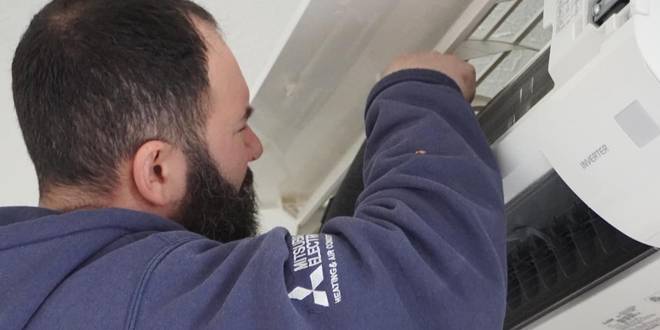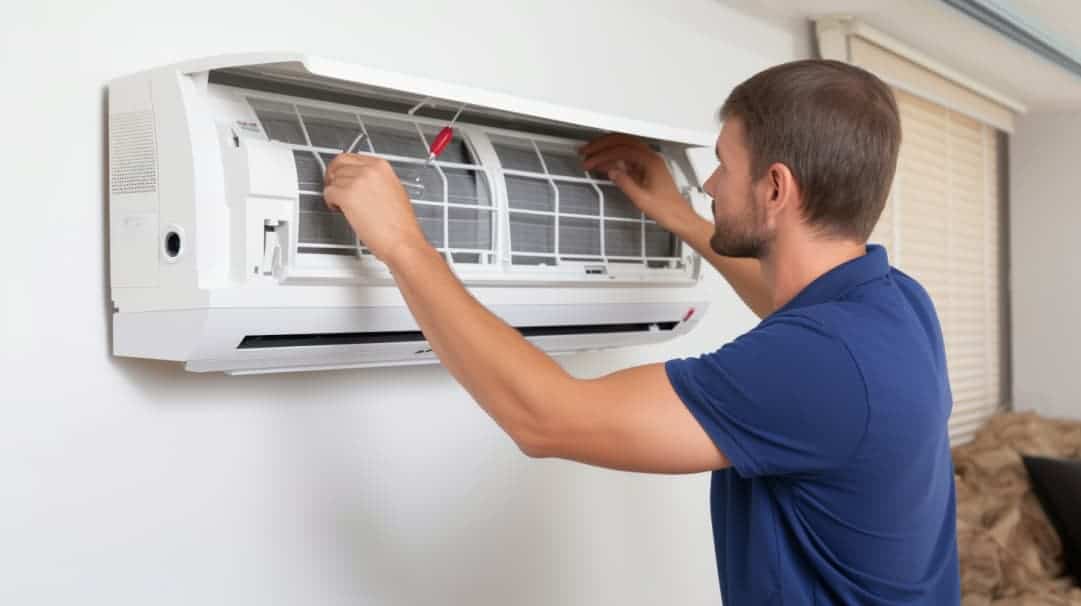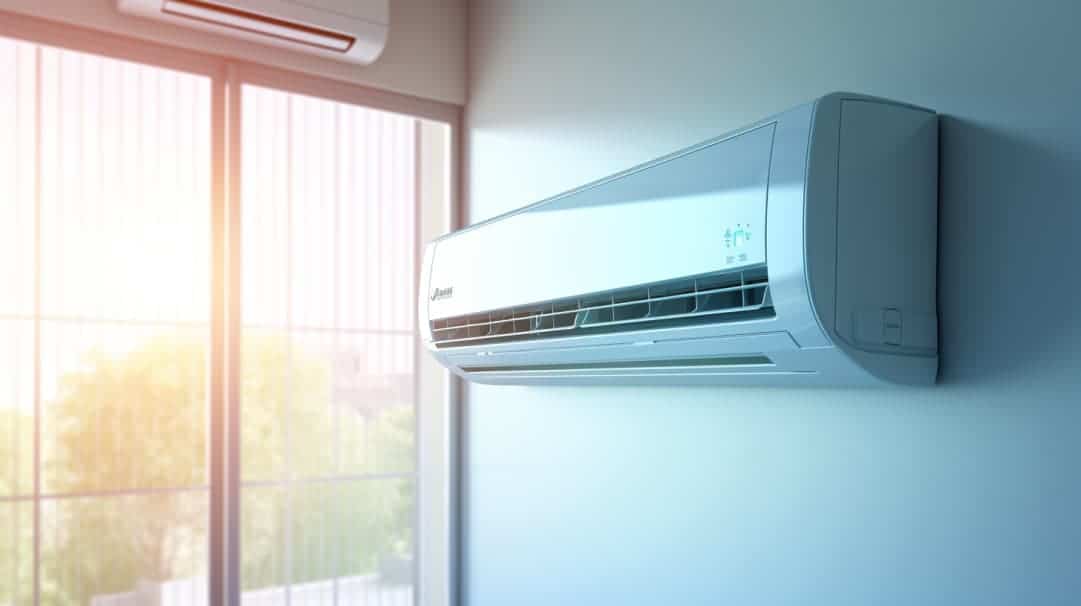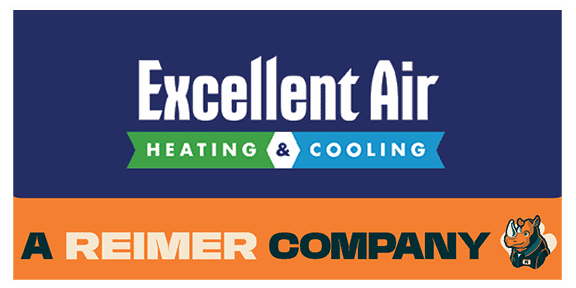Embrace the future comfort of ductless systems

As Rochester residents seek more efficient, cost-effective, and flexible solutions for their home comfort needs, ductless systems emerge as a leading choice. In this Guide to Residential Ductless Systems, you will discover how embracing ductless technology can revolutionize your home’s heating and cooling, offering unparalleled comfort and efficiency.
Understanding Ductless Systems
Ductless systems, also known as ductless mini-splits, represent a flexible and efficient approach to heating and cooling homes without the need for traditional ductwork. This innovative technology offers a streamlined alternative to conventional HVAC systems, making it an ideal solution for various living spaces, from modern apartments to historic homes in Rochester.
What Are Ductless Systems?
At the core of a ductless system are two main components: an outdoor unit and one or more indoor units. These components are connected by a small conduit that houses the power cable, refrigerant tubing, and a condensate drain. This setup eliminates the need for bulky ductwork, allowing for a less invasive installation process and the preservation of a home’s aesthetic and structural integrity.
Outdoor Unit: The outdoor unit of a ductless system contains the compressor and condenser. It’s designed to be installed outside the home, often on a concrete slab or mounted to the exterior wall. This unit works to expel heat from inside the home during the cooling season and draws in warmth from the outside air to heat your home during colder months, depending on the system type.
Indoor Units: Indoor units are sleek, compact, and designed to blend with interior decor. They can be mounted on walls, suspended from ceilings, or even installed as floor-standing units, depending on the specific needs and layout of each room. Each indoor unit is equipped with an air filter and a fan that blows air across the evaporator coil, providing direct heating or cooling to the space.
Remote Control: Operation of ductless systems is made convenient through the use of a remote control, allowing homeowners to adjust temperatures, set schedules, and control other features easily. Some advanced models also offer smartphone app connectivity for even greater control over your home’s climate, no matter where you are.

Benefits of Going Ductless
The shift towards ductless heating and cooling systems isn’t just a trend—it’s a reflection of the significant advantages these systems offer over traditional forced-air systems. Let’s delve into the key benefits that make going ductless an attractive option for homeowners.
Energy Efficiency
One of the most compelling reasons to choose a ductless system is its superior energy efficiency. Traditional HVAC systems can lose a significant amount of energy through ductwork, especially if the ducts run through unconditioned spaces like attics or crawl spaces where they’re not insulated properly. These losses can account for more than 30% of energy consumption for heating and cooling, leading to higher utility bills and unnecessary waste.
Ductless systems, on the other hand, minimize these losses by delivering air directly into each zone or room. Since there are no ducts to leak conditioned air, they operate on a much higher efficiency level. Additionally, many ductless models come with inverter-driven compressors that adjust their speed to match the exact heating or cooling demand. This not only reduces energy consumption but also eliminates the frequent on-off cycling of traditional compressors, further enhancing efficiency and extending the system’s lifespan.
Customizable Comfort
Another significant advantage of ductless systems is the ability to create “zones” in your home, each controlled independently by its indoor unit. This means you can keep the living room cool during the heat of the day without freezing out the bedrooms, or ensure your home office stays warm without overheating the rest of the house.
This zoned approach allows for personalized comfort settings in each room, accommodating different preferences and schedules within the household. It’s also ideal for homes where certain areas are seldom used, as you can choose not to heat or cool these spaces, saving energy and money. Furthermore, with the addition of smart controls and remote operation, adjusting the temperature in any part of your home is as easy as tapping a button on your smartphone.
Ease of Installation
The installation of ductless systems is straightforward and non-invasive, making them an excellent choice for older homes, historic properties, or additions where installing or extending ductwork is impractical or too costly. A small hole (about three inches in diameter) in the exterior wall to connect the indoor and outdoor units is all that’s needed, preserving the structural integrity of your home and minimizing the mess and disruption associated with traditional HVAC installations.
This ease of ductless installation also means ductless systems can be up and running much faster than ducted systems, often in just a day. It’s an ideal solution for quickly adding heating and cooling to new additions, converted attics, finished basements, or any room that needs a little extra comfort without the hassle and expense of major renovations.

Why Homeowners in Rochester Are Switching to Ductless
The adoption of ductless heating and cooling systems in Rochester, NY, is on the rise, and for good reasons. The unique characteristics of Rochester’s climate, architectural landscape, and the specific needs of its residents make the ductless mini split system an increasingly popular choice. Here’s why:
Adapting to Rochester’s Climate
Rochester experiences a wide range of temperatures throughout the year, from hot and humid summers to cold, snowy winters. This variability demands a versatile solution that can provide both efficient cooling and effective heating. Ductless systems, with their capability to offer year-round comfort through a single setup, are perfectly suited to this task.
These systems use heat pump technology, which can efficiently cool your home during the summer and then reverse the process to bring warmth during the winter. This dual functionality makes ductless systems an ideal choice for Rochester residents looking for a single, efficient solution to their climate control needs, eliminating the need for separate heating and cooling systems.
Historic Homes, Modern Comfort
Rochester is home to many historic properties, where the charm and character of the architecture are often at odds with the installation of modern HVAC systems. Traditional systems require extensive ductwork, which can be intrusive and damaging to the structural integrity and aesthetic value of historic homes.
Ductless systems offer a respectful compromise—providing modern comfort with minimal impact on the building’s fabric. The small size of the indoor units and the minimal penetration needed for installation ensure that the unique features of historic homes are preserved while bringing the benefits of modern, efficient heating and cooling.
Solving Room-Specific Challenges
Every home has its quirks, whether it’s a room that’s always too hot in the summer, a chilly basement in the winter, or a new addition that’s not connected to the main heating and cooling system. Ductless mini split systems excel in addressing these room-specific challenges, thanks to their zoned approach to climate control.
With the ability to install multiple indoor units connected to a single outdoor unit, homeowners can tailor the temperature settings in each room or zone to meet their specific needs. This flexibility ensures that every area of the home, from basements and attics to sunrooms and home offices, can enjoy optimal comfort without the inefficiency and expense of heating or cooling unused spaces.

Choosing the Right Ductless System
Making the switch to a ductless system in your home is a significant decision that can greatly enhance your comfort and energy efficiency. However, with various options available, selecting the right system requires careful consideration of your specific needs and circumstances. Here’s a guide to help you navigate the process and make an informed choice.
Assessing Your Needs
Room Size and Layout: The size and layout of the space where you plan to install the ductless unit will largely dictate the capacity and type of system you need. Larger rooms or open-plan areas may require units with higher BTUs (British Thermal Units) to efficiently maintain comfortable temperatures.
Insulation Quality: The quality of insulation in your home affects how hard your heating and cooling system has to work. Homes with poor insulation may need more powerful systems to compensate for heat loss in winter and heat gain in summer.
Sun Exposure: Rooms with significant sun exposure can become particularly warm and may require a cooling solution with greater capacity. Conversely, areas that receive little sunlight and feel cooler might benefit from a less powerful unit.
Taking these factors into account will help you determine the most efficient and cost-effective ductless system for your home.
Types of Indoor Units
Ductless systems come with a variety of indoor unit types, each suited to different room requirements and aesthetic preferences.
Wall-Mounted Units: The most common type, wall-mounted units, are versatile and can be installed in almost any room. They’re best for spaces where floor space is at a premium, and they offer efficient heating and cooling with the bonus of air filtration features.
Ceiling Cassette Units: Installed flush with the ceiling, cassette units distribute air evenly throughout the room, making them ideal for larger spaces or rooms with complex layouts. They’re less visible than wall-mounted units, offering a more integrated look.
Floor-Standing Units: These units are a good choice for rooms with glass walls or limited wall space. They can be placed discreetly against a wall and are excellent for direct heating or cooling.
When choosing the type of indoor unit, consider not only the size and layout of your room but also your aesthetic preferences and the unit’s visibility in the space.
Selecting a Reputable Brand
The quality of your ductless system heavily depends on the manufacturer. Opting for a reputable brand ensures you get a reliable, energy-efficient unit that comes with the backing of good customer service and warranty protection.
Energy Efficiency: Look for systems that boast high SEER (Seasonal Energy Efficiency Ratio) and HSPF (Heating Seasonal Performance Factor) ratings. The higher these ratings, the more efficient the unit is, which translates to lower energy bills and a smaller carbon footprint.
Reputation and Reliability: Research brands and read reviews from other homeowners. A brand with a long-standing reputation for quality and innovation is likely to offer superior products and support.
Warranty and Support: Good warranty coverage is a sign of a manufacturer’s confidence in their product. Ensure the brand you choose offers comprehensive warranty terms and accessible customer support for troubleshooting and maintenance.
Maintenance and Care
Ensuring your ductless system operates efficiently for years to come involves regular maintenance and care. By adhering to a simple upkeep routine, you can enjoy uninterrupted comfort and minimize the likelihood of unexpected repairs.
Keeping Your System Running Smoothly
Clean Filters Regularly: One of the simplest yet most effective maintenance tasks is cleaning the air filters in your indoor units. Most ductless systems have easily accessible filters that should be checked and cleaned every month. This helps maintain air quality and system efficiency.
Clear Debris from Outdoor Units: The outdoor component of your ductless system should be free from leaves, twigs, and other debris. Regularly inspect the area around your outdoor unit and clear any obstructions to ensure optimal airflow and prevent overheating.
Inspect and Clean Indoor Units: Beyond filter cleaning, the indoor units can accumulate dust on the exterior and vents. Gently wipe down the surfaces with a dry cloth and use a soft brush attachment on your vacuum to clean the vents.
When to Call the Pros
While regular homeowner maintenance is crucial, the expertise of a professional is invaluable for ensuring your system’s longevity and efficiency.
Annual Professional Maintenance: Schedule a professional maintenance check at least once a year. This service should include checking refrigerant levels, inspecting electrical connections, and cleaning coils and fans in both indoor and outdoor units. A professional can also identify and rectify any potential issues before they escalate into costly repairs.
Unexpected Issues: If you encounter problems such as unusual noises, a decrease in heating or cooling efficiency, or any signs of refrigerant leakage, it’s time to call in the experts. Professional technicians have the tools and knowledge to safely and effectively resolve complex issues.
Assessing Ductless System Costs and Long-Term SavingsThe Cost Factor
The decision to install a ductless system involves considering the initial investment against the long-term savings and benefits.
Initial Investment vs. Long-Term Savings
Upfront Costs: Ductless systems can have a higher initial cost compared to traditional window units or baseboard heating. However, when compared to the installation of a new central air system, especially in homes without existing ductwork, ductless systems can be more cost-effective.
Energy Savings: The high efficiency of ductless systems translates into significant energy savings. With lower operating costs, many homeowners find that the system pays for itself over time through reduced energy bills. Additionally, the ability to zone your heating and cooling means you only use energy where and when you need it, adding to the savings.
Understanding Rebates and Incentives
Incentives for Energy Efficiency: Many utility companies, states, and local governments offer rebates or tax credits for the installation of energy-efficient ductless systems. These incentives can significantly offset the initial cost and make ductless systems an even more attractive option.
Research Local Offers: Homeowners are encouraged to research available incentives in their area. Utility company websites, state energy offices, and the Database of State Incentives for Renewables & Efficiency (DSIRE) are excellent resources for finding up-to-date information on rebates and incentives.
Join the Ductless Revolution 🏠🌿
Ready to transform your home comfort experience? Excellent Air Heating & Cooling is at the forefront of the ductless revolution in Rochester, NY. With cutting-edge technology, expert installation, and unrivaled customer service, we’re here to guide you every step of the way. Don’t settle for outdated heating and cooling methods. Upgrade to a ductless system today and enjoy efficient, customizable comfort year-round. Contact Excellent Air Heating & Cooling to start your journey to a more comfortable, energy-efficient home! 📞💨❄️🔥




